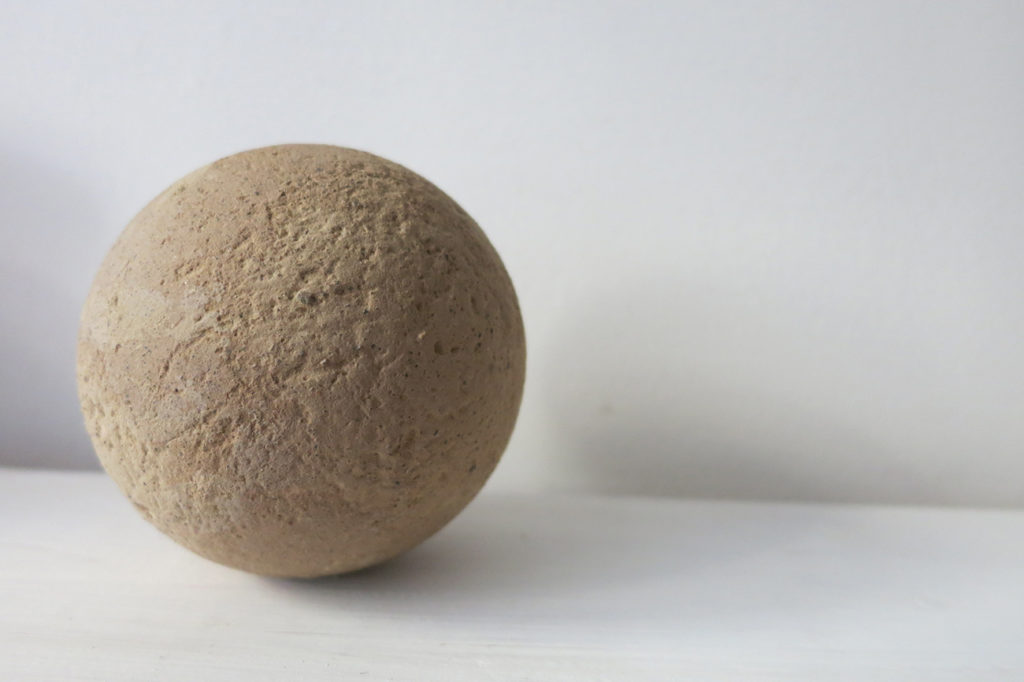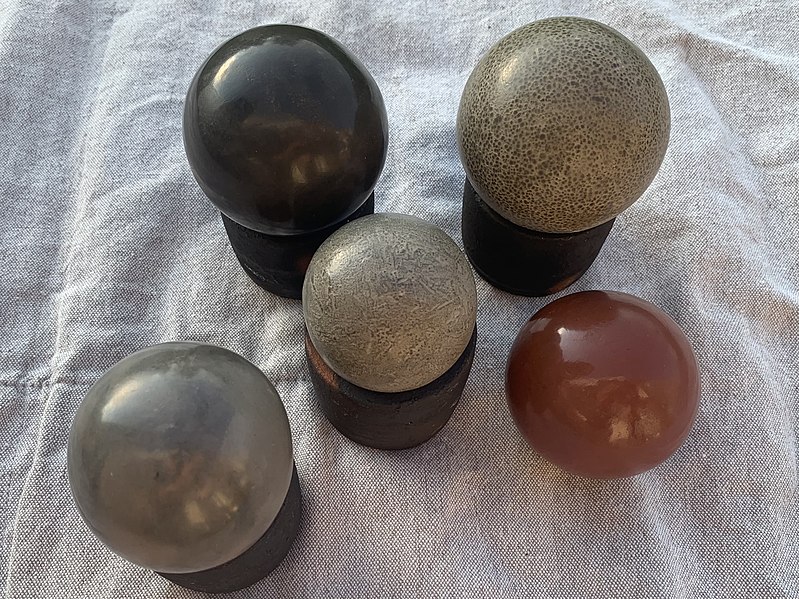
Dorodango: Japanese Mud Dumpling
Dorodango (泥だんご) or “mud dumpling”” is considered a Japanese art form where mud is molded into a ball with the use of water.
Making dorodango is a fun pastime for Japanese children. “Doro” means mud in Japanese and “dango” is a type of round dumpling made from rice flour, hence the name of the art form.
In recent years, the making of dorodango has been refined to the art of the hiraku, “shining” dorodango, which has a glossy surface. Several different techniques are used to create the beautiful balls, the most basic method is creating the core of the ball using mud carefully shaped by hand to be as round as possible.The core is left to dry out, then dusted with finely sifted soil to create a thick crust around the core. This step is repeated several times over with grains of dirt that should be getting finer with each coating to create the shiny surface. A cloth is then used to gently polish the surface. Once the dorodango is completed, it looks like a very fragile polished stone sphere. The process can take as long as several hours and it requires the gentlest hand for the ball not to break.
Mud dumplings. | Blissed101
Making a hiraku dorodango:
Step 1: The Mud
Using a clean container, add a small amount of water to the dirt. Keep adding water until the dirt reaches a dough like consistency.
Step 2: The Core
Take a handful of mud and shape it into a sphere using both hands. Squeeze out as much water as you can. Gently shake the formed ball to fill out any empty or deformed spaces. The shaking motion will fill out the voids, adds to the surface moisture and compacts the ball.
Step 3: The First Layer
To create the first layer, hold the formed ball in one hand and sprinkle fine dirt all around the ball. Use your thumb to remove excess dirt from the sphere. The new layer of dirt absorbs the surface moisture fairly quickly. Work the ball to a point where it isn’t too dry and before it starts to form cracks.
Step 4: Drying it Out
Place the ball in a plastic bag. Rest the bag on top of something soft so the ball retains its shape. Water will condense on the inside of the bag. This allows the surface of the ball to become moist again.
Remove the ball from the plastic bag and repeat Step 3. Return the ball back into the plastic bag. Let it rest until moisture forms yet again.
Repeat the steps until the ball feels as hard as leather. Water may take longer to condense when you arrive at this stage. To facilitate a much faster condensation process inside the plastic bag, you can place it inside a refrigerator. Make sure to remove it from the refrigerator before too much water condenses.
Step 5: The Final Layer
The shine of the dorodango is created by applying a layer of extremely fine dirt. Strain dirt onto a container, cover with a lid, and shake it. Wait a few minutes for the dirt to settle then remove the lid. There should be fine dust sticking to the sides of the container. Use this to layer the dorodango. Repeat this process until the surface moisture of the ball is completely absorbed.
Step 6: Polishing
Remove the ball from the plastic bag and let it dry for about 20 minutes. Gently polish the ball with a soft cloth. You can exert more pressure when the ball is completely dry.

